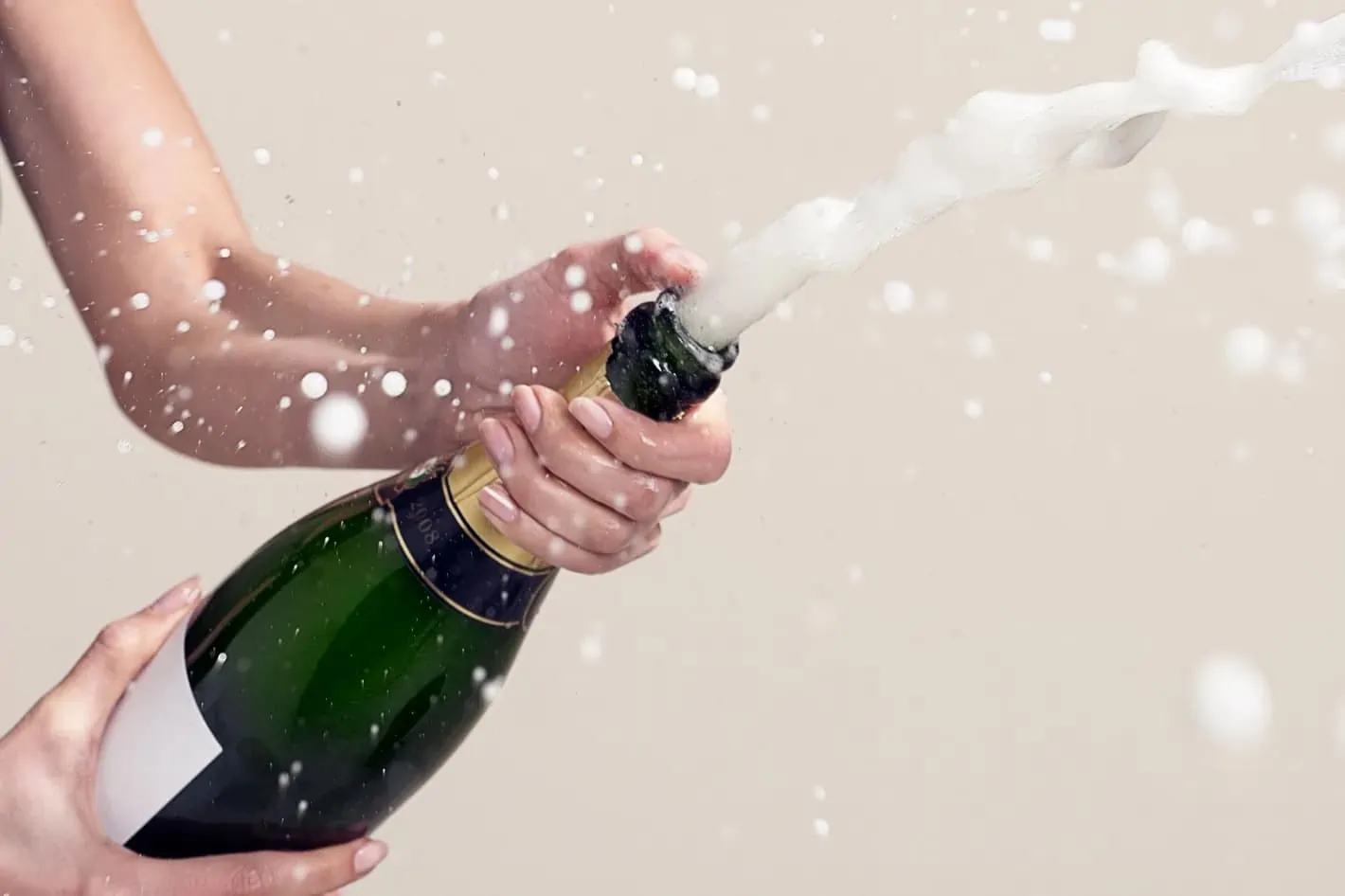You may have wondered what happens when you pop a bottle of champagne? We answer here why champagne produces a powerful shockwave when it is uncorked…
Photo: Walker and Walker
The neck of a champagne bottle behaves like the nozzle of a rocket engine, according to our partner The Conversation.
This “explosion” when you pop a bottle of champagne could be observed and studied using high-speed cameras.
The analysis was carried out by Gérard Liger-Belair, professor of physics at the oenology laboratory of the University of Reims Champagne-Ardenne (URCA).
In recent years, fast imaging has seen dizzying progress, especially with the advent of digital sensors and the miniaturization of electronic circuits. Ultra-fast cameras capable of revealing extremely fleeting phenomena are now available. We have used such a camera to examine the details of the mechanisms at work when a bottle of champagne is uncorked.
During their second fermentation (called prise de mousse), Champagne wines produce carbon dioxide (CO2) – the equivalent of almost 5 liters for a single 75 centiliter bottle – which is trapped under pressure in the closed bottle. The pressure in a corked bottle varies greatly with its temperature. At 20°C, for example, the pressure reaches almost 8 bars, the equivalent of 8 times atmospheric pressure, i.e. the pressure 70 m below the sea! The video sequence in the image above illustrates the phenomena that occur after the corking of a bottle at an initial pressure of 8 bar.
When the cork pops, the volume of carbon dioxide under pressure in the neck of the bottle suddenly expands. Its pressure then drops from 8 bar to the ambient pressure of 1 bar. This is accompanied by a drop in temperature: physicists call this adiabatic expansion. Depending on its temperature and pressure, a pure substance can exist in three phases: gas, liquid and solid. Thus, under a pressure of 1 bar, water is liquid at 20°C, turns to ice below 0°C and boils to vapor at 100°C. But what about CO2? At a pressure of 1 bar, CO2 remains in a gaseous state above a temperature of -78.5°C; below this critical temperature, it exists in its solid form: dry ice.
Pop a bottle of Champagne VS Dry ice and a shock wave
For this bottle, under an initial pressure of 8 bar, the temperature of the suddenly expanding carbon dioxide drops to almost -90°C. The CO2 vapors are then converted into small dry ice crystals, which can scatter ambient light. The light blue color of the plume indicates the very small size of these crystals. This is because particles or molecules smaller than the wavelengths of the ambient light spectrum (centered around 0.6 µm) scatter much more efficiently at shorter wavelengths of the spectrum (such as blue) than at longer wavelengths (such as red): this is known as Rayleigh scattering.
This is the same phenomenon that explains why the sky appears blue to us: the molecules that make up our planet’s atmosphere are much smaller than the wavelengths of sunlight, so blue scatters much more efficiently than other colors in the spectrum.
Have you noticed the small horizontal line across the blue plume? This is a shock wave characteristic of supersonic jets, known as Mach disks. It appears about 500 µs after de-corking, progresses in the wake of the cork and fades about 500 µs later. Similar shock waves are found in the supersonic plume coming out of fighter jet and rocket nozzles. During the first millisecond after cork ejection, the neck of a champagne bottle behaves a bit like the nozzle of a rocket engine. What do you know.
Don’t drink and drive. Enjoy responsibly.

